
 |
 Last additions - Astronomical Images Last additions - Astronomical Images |
 |
|
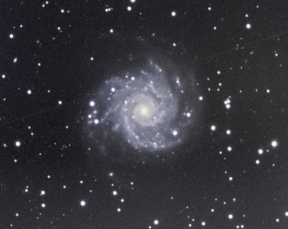
M74 - Spiral galaxy in Pisces213 viewsFace-on spiral galaxy about 32 million light-years from Earth in the constellation Pisces.Aug 01, 2022
|
|
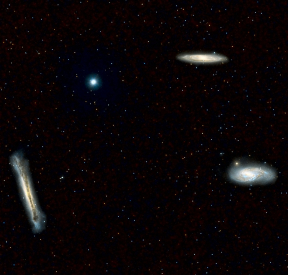
The Leo Galaxy Trio264 viewsA famous triplet of spiral galaxies: Lower right - Messier 66; upper right, Messier 65; lower left, NGC 3628. All about 35 million light years away in the constellation Leo the Lion.May 26, 2022
|
|
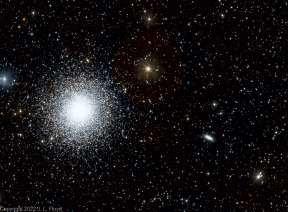
NGC 6207, Spiral Galaxy in Hercules220 viewsNGC 6207 is the small oval object on the right side of the photo, just below the centerline. It is seen nearly edge-on and is about 30 million light-years from Earth. It is somewhat outshone by M13, the large globular cluster on the left, which is of course much closer, at 22,200 light-years from Earth. May 24, 2022
|
|
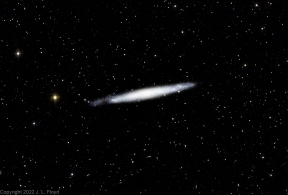
NGC 4244, the Silver Needle Galaxy in Canes Venatici226 viewsAnother "needle" edge-on galaxy, member of a group of galaxies associated with Messier 94 in the Virgo supercluster; about 14 million light-years from Earth.May 24, 2022
|
|
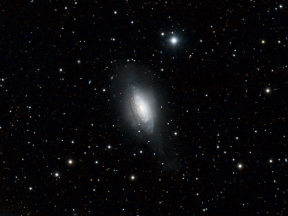
NGC 3521, "flocculent" spiral galaxy in Leo257 viewsNGC 3521 is termed a "flocculent" spiral galaxy because it has patches or clumps of stars breaking up the continuity of the spiral arms. Self-propagating star formation is thought to account for the patchiness. The galaxy lies about 26 million light-years away from us.May 24, 2022
|
|
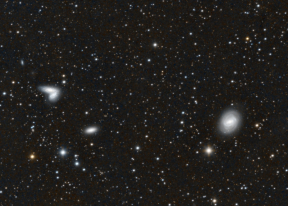
Messier 58 and the Siamese Twins226 viewsM58 is a barred spiral galaxy about 62 million light-years away in the constellation Virgo. The Siamese Twins, NGC 4567 and 4568, are colliding spiral galaxies about 60 million light-years away, in the early stages of merging; they are also nicknamed the Butterfly Galaxies.May 24, 2022
|
|
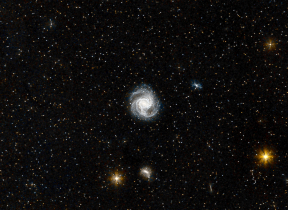
Messier 61 - Face-on Barred Spiral Galaxy in Virgo241 viewsOne of the largest members of the Virgo Cluster, M61 is a starburst galaxy, i.e. it has an unusually high rate of star formation, with an active galactic nucleus that features a massive nuclear star cluster and a supermassive black hole. It is about 53 million light-years away from Earth.May 24, 2022
|
|
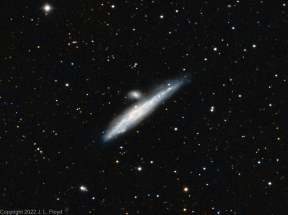
NGC 4631, The Whale Galaxy215 viewsA barred spiral galaxy in the constellation Canes Venatici. Contains a central starburst - a region of intense star formation. The "calf" - the nearby dwarf galaxy - is NGC 4527.May 14, 2022
|
|
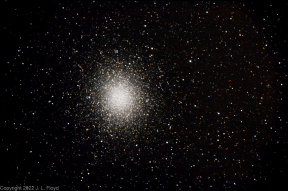
NGC 5139 - Omega Centauri Cluster247 viewsGlobular cluster in Centaurus, 17,090 light-years away. The largest-known globular cluster in the Milky Way, estimated to contain approximately 10 million stars, and a total mass equivalent to 4 million solar masses.May 13, 2022
|
|
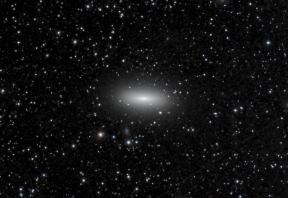
NGC 3115 - Lenticular Galaxy in Sextans278 viewsFormerly thought to be an elliptical galaxy, now considered a lenticular (lens-shaped) galaxy because it has a disk and a central bulge of stars, but no discernible spiral structure. Distance from Earth is about 32 million light years. It is several times larger than the Milky Way galaxy.Mar 27, 2022
|
|
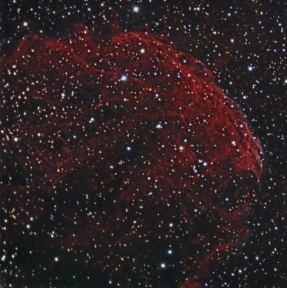
IC443 - Jellyfish Nebula217 viewsA galactic supernova remnant in Gemini, about 6000 light-years away.Feb 09, 2022
|
|
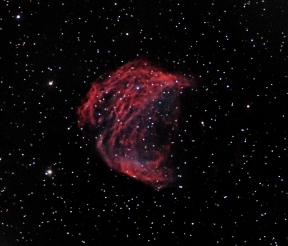
Medusa Nebula (Sharpless 2-274)227 viewsPlanetary Nebula in Gemini. Discovered in 1955, first thought to be a supernova remnant, but Soviet astronomers in 1971 determined it to be a planetary nebula.Feb 09, 2022
|
|
| 257 files on 22 page(s) |
 |
 |
 |
 |
 |
 |
 |
9 |  |
 |
 |
 |
 |
 |
|

|